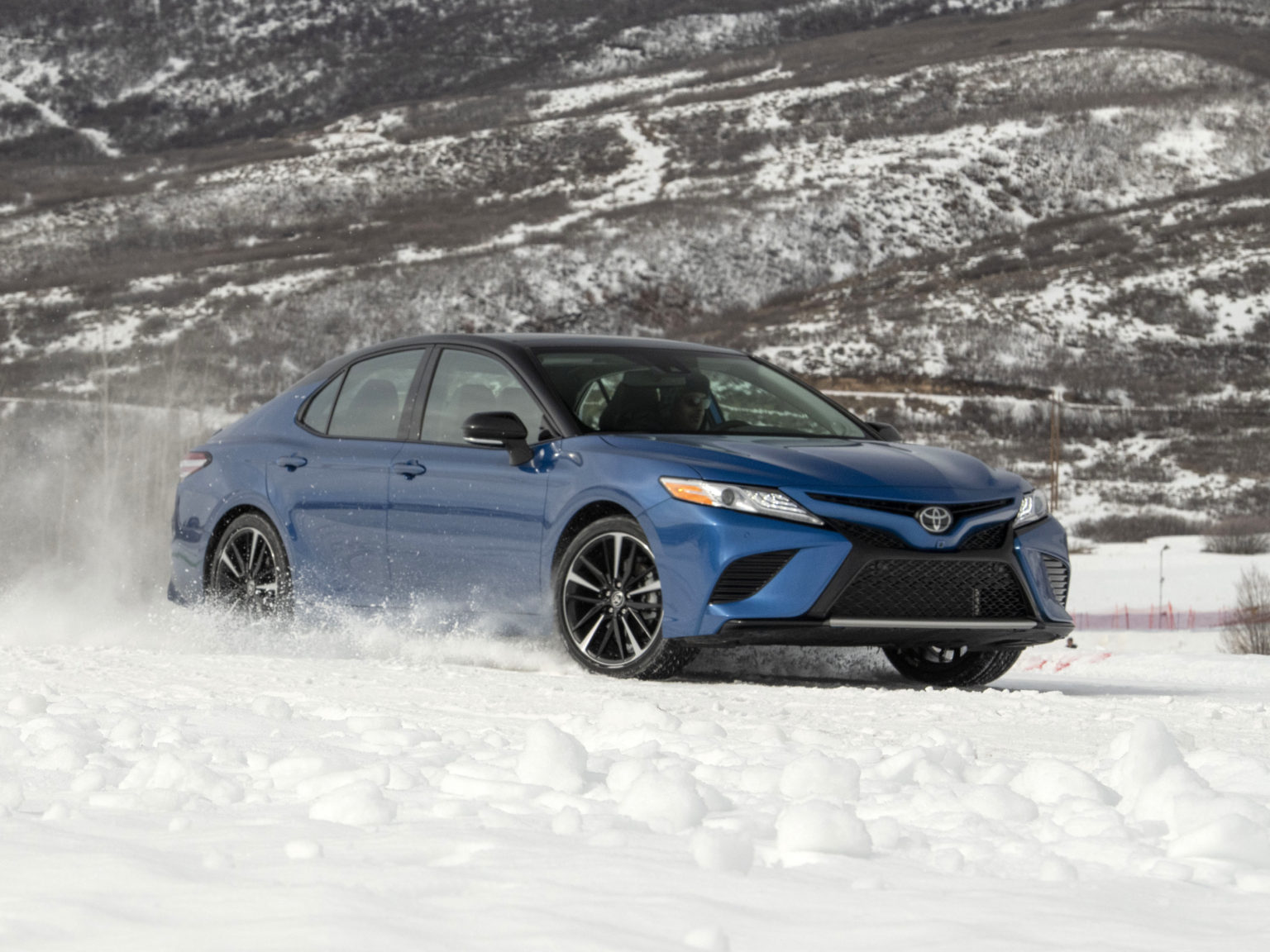Toyota introduced its first all-wheel drive Camry in decades this year. They have made all-wheel drive an option for the 2020 Toyota Camry LE, SE, XLE, and XSE. Pricing has not yet been announced but will be revealed before the models go on sale later this year.
The 2020 Camry, along with the 2021 Toyota Avalon, has dynamic torque control all-wheel drive.
Mechanically this means that the car has two axles that each attach to two wheels. The axles are connected by a drive shaft.
When wheels start slipping, the car’s all-wheel drive system kicks in.Photo courtesy of Toyota Motor Sales U.S.A., Inc.
At the intersection of the front axle and drive shaft is the transmission and a single speed transfer case. The transfer case is a mechanical device that transfers power from the transmission to the front and rear axles via the drive shaft.
At the intersection of the drive shaft and the rear axle, there is a differential. The differential is a set of gears that allows the car’s wheels to revolve at different speeds.
On the drive shaft, between the differential and intersection of the drive shaft and transfer case is a coupler. The coupler doesn’t sit in the middle, but rather about two-thirds of the way back toward the differential. The coupler is there to provide a mechanical backup in case one of the sets of wheels in the vehicle starts to slip. When this happens, the coupler applies additional torque to the non-slipping wheels in an effort to keep the car going in the direction the driver intended rather than the direction the skid is trying to force the car to go.
The Camry has part-time all-wheel drive allowing drivers to take advantage of the technology as needed.Photo courtesy of Toyota Motor Sales U.S.A., Inc.
In some vehicles, torque can be delivered to one, two, three, or all four wheels to varying degrees depending on what the road conditions require. In the Camry, the torque can only be delivered in equal amounts to both rear wheels.
Not all all-wheel drive systems operate all of the time. The ones that don’t are called part-time all-wheel drive systems. This allows the driver to receive the benefits of an all-wheel drive system as well as the fuel efficiency that comes with front- or rear-wheel drive when the conditions are right.
When traction is lost in either the front or back, Toyota’s all-wheel drive system applies more torque to the wheels with traction to keep the car driving in the right direction.Photo courtesy of Toyota Motor Sales U.S.A., Inc.
In the Camry’s case, when the all-wheel drive system is not enabled, the car runs as a front-wheel drive model. This is the same as Camrys not equipped with all-wheel drive.








